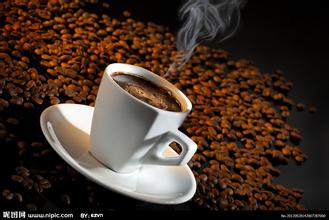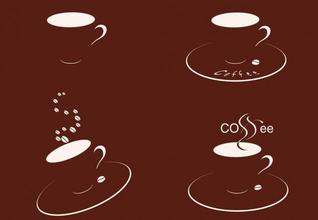Introduction to the roasting method of Rwandan Coffee and the Regional treatment method of Manor production
Introduction to the roasting method of Rwandan Coffee and the Regional treatment method of Manor production
Prime Minister Pierre Damian Habumlanyi. Born on February 21, 1961, graduated from the University of Paris II majoring in pedagogy. Served as Director of the National Electoral Commission of Rwanda from 2005 to 2008. From 2008 to 2011, Habm Lanyi served as a member of the East African Legislative Assembly, the legislative body of the East African Community, and was appointed Minister of Education by President Paul Kagame in May 2011. On October 7, 2011, President Kagame of Rwanda appointed the then Minister of Education Pierre Damian Habran as Prime Minister. The Rwandan flag was launched on 25 October 2001 and was designed by an engineer and artist. The ratio of length to width of the national flag is 3:2. The national flag is blue, yellow and green. Blue means that the people must fight for peace in order to achieve sustained economic growth and bring a happy life; yellow means that the people must live and work in peace and contentment to promote permanent economic development; and green symbolizes the hope of prosperity through the reasonable development of the people. it also symbolizes the resources of the country. At the top right, there are 24 sun signs, and 24 rays guide the people of the whole country, expressing unity, innocence and transparency, and the struggle against ignorance.
Most of the coffee in Rwanda is washed. The water washing method will first wash and flotation the ripe coffee fruit, then remove the exocarp, pulp and part of the pectin layer, then send the coffee into the fermentation tank, remove the remaining pectin layer and then send it to the drying ground for drying treatment, so that the water content reaches about 13%. The coffee in the picture above is dried on an African shed to avoid the smell of dirt. It is more ventilated and mildew can be avoided. During the drying process, coffee farmers will also turn the beans regularly to make the drying more evenly, and at the same time will pick out the beans of poor quality and discard them.
With the improvement and improvement of Rwandan coffee in various aspects, its quality has also made a qualitative leap. In the 2008 COE contest held by the American Fine Coffee Association SCAA, Arnomega, Rwanda, beat the Blue Mountain 1 of Jamaica and Mantenin G1 of Sumatra to defend the title. With its excellent quality, Rwandan coffee has won a place in the coffee world and won more attention.
Rwanda raw bean, bourbon seed, water washing treatment. The picture below shows cooked beans, light to medium baked, round and plump, with beautiful beans.
When it comes to the flavor of Rwanda, I am ashamed of the biased perception of Rwanda in the first place. I still remember that when I first came into contact with coffee, smell training was very resistant to No. 3 in the 36-smell bottle, and I even felt nauseous when I smelled it. So subjectively, I always like to make up the taste similar to grass automatically for the smell of green peas. Due to the lack of experience in tasting and production, we will subjectively list the grass and lavender-like aroma that Rwanda has as its own conflicting flavor. So when the production of Rwanda smelled its individual lavender fragrance, the coffee glutton shrank back to its stomach. However, with the improvement of taste and production experience, there is a new understanding of Rwanda with individual aroma.

Important Notice :
前街咖啡 FrontStreet Coffee has moved to new addredd:
FrontStreet Coffee Address: 315,Donghua East Road,GuangZhou
Tel:020 38364473
- Prev

Introduction to the Variety characteristics of Ramon Coffee Bean Flavor description treatment in Colombia
Colombian Ramon coffee bean flavor description, variety characteristics, regional introduction, just as only wine produced in the champagne region of France can be called champagne, only coffee produced in Colombia and picked by hand can be called Colombian coffee. Colombian coffee is one of the few original coffee sold in the world under the name of the country. In terms of quality, it has acquired other
- Next

Flavor description treatment of Sumatran Coffee introduction to the producing areas of the characteristics of taste quality
Sumatran coffee describes the processing process and Sumatran characteristics. I describe these treatments in such detail because it is not clear to what extent the soil and atmosphere, the unusual handling techniques and the three-stage drying each affect the formation of the characteristics of Lindong and Manning coffee. Only one thing is certain. These treatments occasionally produce excellent coffee
Related
- Detailed explanation of Jadeite planting Land in Panamanian Jadeite Manor introduction to the grading system of Jadeite competitive bidding, Red bid, Green bid and Rose Summer
- Story of Coffee planting in Brenka region of Costa Rica Stonehenge Manor anaerobic heavy honey treatment of flavor mouth
- What's on the barrel of Blue Mountain Coffee beans?
- Can American coffee also pull flowers? How to use hot American style to pull out a good-looking pattern?
- Can you make a cold extract with coffee beans? What is the right proportion for cold-extracted coffee formula?
- Indonesian PWN Gold Mandrine Coffee Origin Features Flavor How to Chong? Mandolin coffee is American.
- A brief introduction to the flavor characteristics of Brazilian yellow bourbon coffee beans
- What is the effect of different water quality on the flavor of cold-extracted coffee? What kind of water is best for brewing coffee?
- Why do you think of Rose Summer whenever you mention Panamanian coffee?
- Introduction to the characteristics of authentic blue mountain coffee bean producing areas? What is the CIB Coffee Authority in Jamaica?

